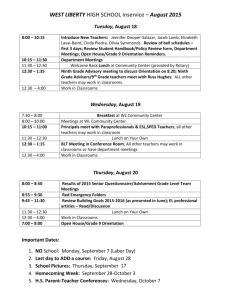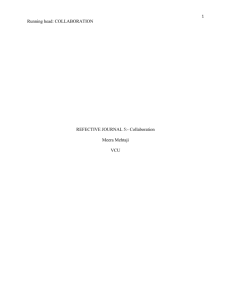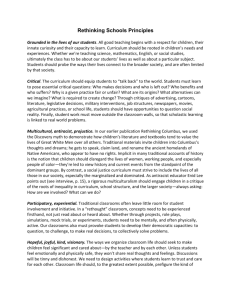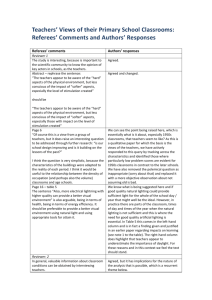Title: School Leadership and Classroom Uses of
advertisement
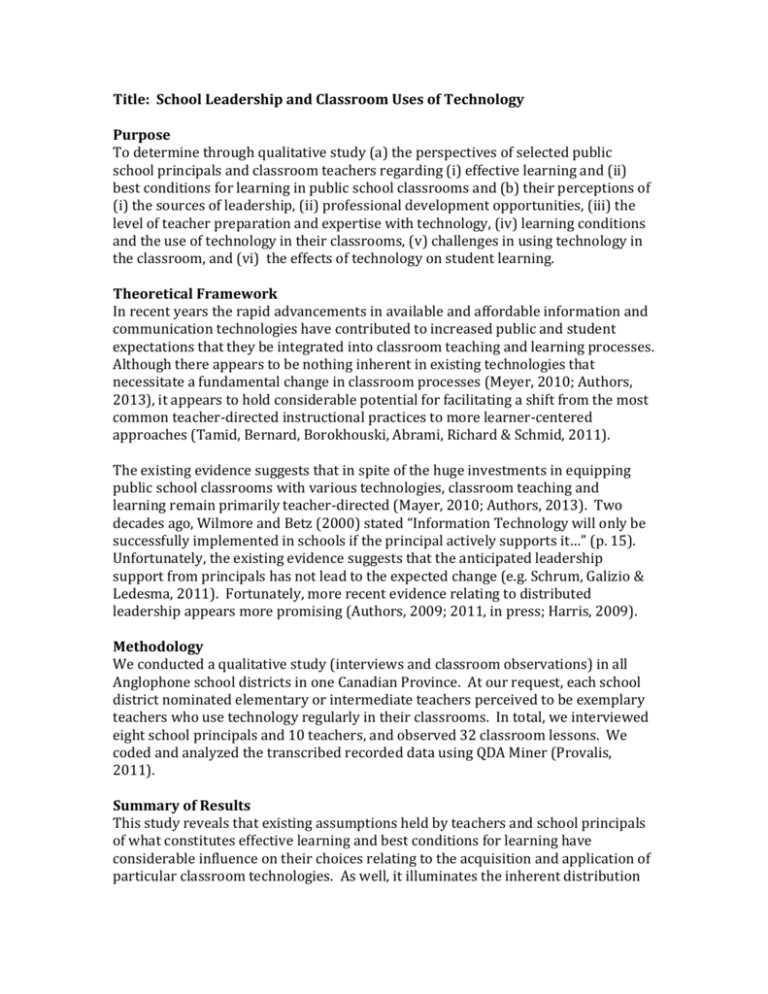
Title: School Leadership and Classroom Uses of Technology Purpose To determine through qualitative study (a) the perspectives of selected public school principals and classroom teachers regarding (i) effective learning and (ii) best conditions for learning in public school classrooms and (b) their perceptions of (i) the sources of leadership, (ii) professional development opportunities, (iii) the level of teacher preparation and expertise with technology, (iv) learning conditions and the use of technology in their classrooms, (v) challenges in using technology in the classroom, and (vi) the effects of technology on student learning. Theoretical Framework In recent years the rapid advancements in available and affordable information and communication technologies have contributed to increased public and student expectations that they be integrated into classroom teaching and learning processes. Although there appears to be nothing inherent in existing technologies that necessitate a fundamental change in classroom processes (Meyer, 2010; Authors, 2013), it appears to hold considerable potential for facilitating a shift from the most common teacher-directed instructional practices to more learner-centered approaches (Tamid, Bernard, Borokhouski, Abrami, Richard & Schmid, 2011). The existing evidence suggests that in spite of the huge investments in equipping public school classrooms with various technologies, classroom teaching and learning remain primarily teacher-directed (Mayer, 2010; Authors, 2013). Two decades ago, Wilmore and Betz (2000) stated “Information Technology will only be successfully implemented in schools if the principal actively supports it…” (p. 15). Unfortunately, the existing evidence suggests that the anticipated leadership support from principals has not lead to the expected change (e.g. Schrum, Galizio & Ledesma, 2011). Fortunately, more recent evidence relating to distributed leadership appears more promising (Authors, 2009; 2011, in press; Harris, 2009). Methodology We conducted a qualitative study (interviews and classroom observations) in all Anglophone school districts in one Canadian Province. At our request, each school district nominated elementary or intermediate teachers perceived to be exemplary teachers who use technology regularly in their classrooms. In total, we interviewed eight school principals and 10 teachers, and observed 32 classroom lessons. We coded and analyzed the transcribed recorded data using QDA Miner (Provalis, 2011). Summary of Results This study reveals that existing assumptions held by teachers and school principals of what constitutes effective learning and best conditions for learning have considerable influence on their choices relating to the acquisition and application of particular classroom technologies. As well, it illuminates the inherent distribution 2 of leadership and the complex interplay between formal and informal leaders in schools and school districts that influence those above noted choices. Relevance This study sheds light on the challenges of bringing about classroom change and provides rich images of successful leadership processes in schools and classrooms that are perceived to have experienced some success. Connection to the Conference Theme Ensuring access for all learners to knowledge sources and learning how to learn are essential goals of public education systems. With the increased dependence on information technologies and the concomitant explosion of knowledge, it is imperative that we explore the role of school leaders in facilitating the transformation from the traditional teacher-directed classrooms to studentcentered, technology-enabled learning environments.


